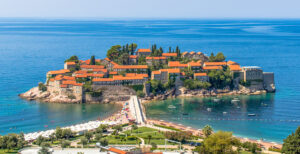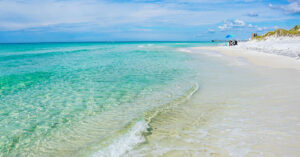The worst education system in the world is a debate that’s raged for decades. The United States has the world’s most expensive education system, but that doesn’t mean it’s the best. In fact, the country’s high cost, the low-quality education system is so bad that it has even helped make it one of the worst countries in the world to raise a child.
In today’s world, education is considered a must for any individual who aspires to be successful in life. Education is a key to success, and everyone should be educated, right? This is what is taught to the kids in their classrooms, which later turns out to be a myth.
When it comes to education, there are many different definitions, but most would agree that a good education system encompasses three factors: quality, accessibility, and hope. Unfortunately, these are often overlooked when comparing education systems across the globe. This blog will explore the top 10 worst education systems in the world and shed some light on why they are the way they are.
How to Measure the Worst Education System in a Country:
There are several ways to measure the worst education system in a country.
Low Enrollment to Tertiary Institutions:
One way is to look at the gross enrollment rate in the country’s primary to secondary level. This is typically an indicator of the education level in a country.
High Adult Illiteracy:
Another way is to look at the literacy rate of the country. Literacy is a good indicator of education in a country.
Test Scores:
A third way is to look at the test scores of the students of a country. Test scores usually indicate the quality of education in a country.
Low Education Development Index:
The low education development index is a description of the current development of an educational system in a country or state. The index uses three indicators: primary education and out-of-school children, and secondary education completion rate.
Low Budget Allocation to the Education Sector:
Low budget allocation by the government to Education Sector has been a crucial issue in many developing countries. Such countries mostly suffer from a lack of a good education system. The quality of the education system and the way it functions in the country is one of the most important factors in improving the level of opportunity.
Many countries in the world are spending millions of dollars on the education sector to improve their education system. So, budget allocation by the government is a way to measure the worst education system in a country.
Political Turmoil:
Political turmoil and Ethnic cleansing are also ways to measure the education system.
Corruption in Education System:
While there are so many different factors that determine a country’s quality of education, there is one factor that stands out as being critically important. This factor is corruption in the education system.
The Education system is in a state of turmoil, with a clear divide between those who are doing well and those who are failing. The reason? The lack of proper regulations, poor infrastructure, and corruption.
Top 10 Countries with Worst Education Systems in The World
The top 10 countries with worst education systems in the world might surprise you. The education system in some countries might not be recognized for its quality or its ability to help students grow. Check out this list to find out where the worst education systems in the world are.
1. Education in Niger

Niger is a nation located in Western Sahara, bordered to the east by Chad, to the northeast by Libya, to the south by Nigeria, and more than 80% of its land area is in the Sahara Desert. Its total area is approximately 1,267,000 square kilometers, and it has a population of around 24,112,753 people.
Things are getting worse for the children in Niger. The situation in Niger’s education system is slowly getting worse in terms of quality. The way it handles education in Niger is highly problematic, with a lot of issues such as early marriages and child labor. It is the main challenge to increase the education system due to poverty. Niger is one of the worst countries with lowest education system in the world.
Niger is one of the countries in the world that has the lowest literacy rate. It was 28.7% in 2005. So, it is easy to say which country has worst education system.
2. Education in Burkina Faso

Burkina Faso is a landlocked West African country that has a population of about 21,510,181 people that was estimated in 2020. It is bordered to the northwest by Mali, to the northwest by Niger, to the southeast by Benin, to the south by Togo and Ghana, and to the southwest by Ivory Coast.
The country covers a land area of about 274,200 square kilometers. Population density is very high, with almost 64 persons per square kilometer. The population is growing rapidly.
Burkina Faso is an impoverished West African country with an estimated net primary enrollment rate was 36 percent. A literacy rate of 25.3 percent that estimated in 2008, and 26.5 percent of children attend school at the ages of 6 to 14 years in Burkina Faso.
Most schools are run by religious organizations. In addition to being poorly funded, these schools lack essential resources such as textbooks, desks, chairs, and books. Despite the poor quality of education.
3. Education in Mali

Mali is a landlocked country located in West Africa. “The landlocked country of Mali was once called French Sudan before it gained independence from France in 1960. Mali has a population of about 20,250,833 people estimated in 2020. The country covers a land area of about 1,240,000 square kilometers. Population density is almost 12 persons per square kilometer.
Its education system is one of the worst in the world. The education system in Mali is influenced by the country’s history, which is where the problems start. The country was occupied by numerous countries throughout its history, and these countries had a multitude of different educational systems. This variety of educational systems has made it difficult for Mali to educate its children in a single, unified system, and has led to a lack of standardization in the country’s education system.
Education as we know it in northern Mali, a vast swath of the Sahel region of Africa, consists of the following objects: a school desk, a chalkboard, and a teacher. This is not to say that there are no schools in the area. There are, as there are everywhere and always have been, schools in the cities and villages. They are just not the schools we are familiar with.
Here in Mali, the primary school enrollment rate was 61% as of 2017, and an estimated literacy rate is 27 to 46.4 percent. The literacy rates of women are lower than men.
4. Education in the Central African Republic

The Central African Republic (CAR) is a small, landlocked nation located in Central Africa. It gained independence from France in 1960 and has been ruled by a series of authoritarian governments since then. In November 2012, a coalition of rebel groups, including the Seleka and the anti-Balaka militias, overthrew the government of President Francois Bozize, and in December 2015, led the country into a new president, Faustin-Archange Touadera. It has been a bloody transition.
While the majority of the population 89.5% is Christian, 8.5% of the population practices Islam, and the remaining is mostly traditional faiths and others. The Central African Republic has a population of about 4,666,368 people estimated in 2018. The country covers a land area of about 622,984 square kilometers. Population density is almost 7 persons per square kilometer.
The world is divided into two types of countries: the ones that have excellent education systems, and the ones that do not. The Central African Republic is one of the countries that do not have a good education system. Malnutrition and poor health in many countries around the world are correlated with the lack of education and skills of the people. This is especially true in the countries with the least amount of education.
The Central African Republic has one of the world’s worst education systems. Much of its education remains very low quality, and the country’s school dropout rate is the second-highest in the world. In 2000, only 43 percent of the country’s primary school-age (ages of 6 and 11) population was enrolled in school. The adult literacy rate in the Central African Republic was 37.4 percent in 2018.
5. Education in Ethiopia

Ethiopia is a landlocked country in the Horn of Africa. It shares borders with Somalia, Somaliland, Eritrea, Djibouti, Kenya, Sudan, and South Sudan – these are the countries that surround Ethiopia. It is one of the largest countries in Africa, with a population of over 117,876,227 people estimated in 2021. The country covers a land area of about 1,104,300 square kilometers. Population density is almost 92.7 persons per square kilometer.
In Ethiopia, the majority of students come out of school illiterate, unskilled, and with poor job prospects. The average life expectancy in Ethiopia is 56 years for men and 60 years for women. A large number of children die from preventable diseases before reaching adulthood.
Education in Ethiopia is still in its infancy. The country has the highest population with a low literacy rate in Africa, with an average of 5th-grade children only able to read and write simple phrases. As of 2015, the literacy rate is 49.1 percent in Ethiopia that is still the worst.
The Ethiopian government has made some progress in expanding access to education. Ethiopia has a school system that consists of pre-primary, primary, secondary, and higher levels of education. The Ministry of Education implements the country’s educational system that was introduced and consists of 4-6 years of pre-primary education. Primary education has two cycles from the age of 7-10 years and 11-14 years. Secondary education has also 2-cycle from the age of 15-16 years and from age 17-18 years.
The gross enrollment rate for primary schools at the age of 7-year-olds is 90 percent recently. But more than half percent of students don’t complete both cycles of primary education.
6. Education in Eritrea

Eritrea has been considered a democratic country for quite some time now, it still does not have citizens with all the tools required to understand the true value of education.
The schools in Eritrea are the worst in the world, and the population suffers as a result. The country ranks last in the world for primary school enrolment rate, secondary school graduation rate, and tertiary school enrolment rate. This is a direct result of the government controlling and restricting what goes on in the school system. The government is not interested in creating an educated population. This is a result of the civil war that has been waged between Eritrea and Ethiopia.
Education in Eritrea has five levels, pre-primary, primary, middle, secondary, and post-secondary. Eritrean children typically start their education at the age of 6 to 13 years. Primary school is normally completed at the age of 15. The basic school curriculum includes English, Tigrinya, Arabic, the history of Eritrea, mathematics, science, informatics, physical education, and civic education.
7. Education in Guinea

As one of the poorest countries in the world, the Eritrean education system is not much of an achievement. However, it is a subject that is rarely discussed and has massive implications for any potential development in the country.
Eritrea has been considered a democratic country for quite some time now, it still does not have citizens with all the tools required to understand the true value of education. Eritrea shares borders with Ethiopia, Djibouti, and Sudan. Eritrea’s population of over 3.214 million people was estimated in 2011. The country covers a land area of about 117,600 square kilometers.
The schools in Eritrea are the worst in the world, and the population suffers as a result. The country ranks last in the world for primary school enrolment rate, secondary school graduation rate, and tertiary school enrolment rate. This is a direct result of the government controlling and restricting what goes on in the school system. The government is not interested in creating an educated population. This is a result of the civil war that has been waged between Eritrea and Ethiopia.
Education in Eritrea has five levels, pre-primary, primary, middle, secondary, and post-secondary. Eritrean children typically start their education at the age of 6 to 13 years. Primary school is normally completed at the age of 15. The basic school curriculum includes English, Tigrinya, Arabic, the history of Eritrea, mathematics, science, informatics, physical education, and civic education.
8. Education in Chad

The Republic of Chad is a landlocked country in north-central Africa. It shares borders with Libya, Sudan, the Central African Republic, Cameroon, Nigeria, and Niger – these are the countries that surround Chad. The population of Chad is 16,244,513 people estimated in 2020. The country covers a land area of about 1,284,000 square kilometers. Population density is almost 8.6 persons per square kilometer.
The education systems in place in Chad have been described as “worse than other countries of Africa”. The education system has been crumbling for decades, leading to “no education whatsoever” in most rural areas. Education is completely free in urban areas, but on average the government spends only 2% on it.
The kids have to come to school without breakfast because the school can’t afford to buy breakfast for them. Overall, the education system in Chad is not that appealing for kids to go to school, but if they have to go to school, they can expect to get a very tough time.
Chad has a diverse curriculum, with over 68 percent of boys attending primary school. However, the education is poor, and many teachers lack training. The country has the lowest literacy rates of Sub-Saharan Africa, which is estimated to be only 33%. More than 50% of people are illiterate.
In the Republic of Chad, more than 53 percent of children at the age of 5-14 are child labor, and at the age of 7-14 30 percent of children are going to school, in addition, they work together as child labor too. These scenarios say how the worst education system in Chad.
9. Education in The Gambia

The Gambia is a small country in mainland Africa with a population of 2,173,999 but there is a big difference in the education levels between men and women. The gender gap is so big that there are more men than women in primary school. The Gambia covers a land area of about 10,689 square kilometers. Population density is almost 176.1 persons per square kilometer.
Education in The Gambia is a country with a very low literacy rate and one of the highest tuition fees in the world. Even though it has high literacy rates in primary and secondary education, the last two years of secondary education are poorly attended. Students who continue to the third year of secondary education are known as “Juniors” and they spend most of their time at home.
There are few countries that have a worse school system than the Gambia. This smallest mainland African country has consistently ranked among the bottom countries in the world in educational performance. In 2019, the Gambia’s Education Index was ranked 148 out of 162 countries.
10. Education in Angola

Angola is a country in southwestern Africa, and It shares borders with Namibia, DR Congo, Zambia, and the Atlantic Ocean. The country has an estimated population of approximately 31,127,674 people. Angola covers a land area of about 1,246,700 square kilometers. The population density of Angola is almost 24.97 persons per square kilometer.
The Angolan Government has not done a good job in terms of the education sector. A country ranked 39 out of 52 in Sub-Saharan Africa, is now one of the lowest countries in the world in terms of life expectancy. The literacy rate is one of the lowest in the world and the country has one of the highest levels of child mortality.
In the past, the appearance of education in Angola was very poor and deprived. However, with the foreign investment from the oil industry, the Agostinho Neto University is the largest public University of Angola was created. Agostinho Neto University (University of Angola) was created in 1979 with a mission to provide quality education to African society.
It is the only university in Angola and is the largest and most prestigious educational institution in the country, offering undergraduate and postgraduate degrees. The literacy rate in Angola is 71.1 percent as of 2015 estimates.















